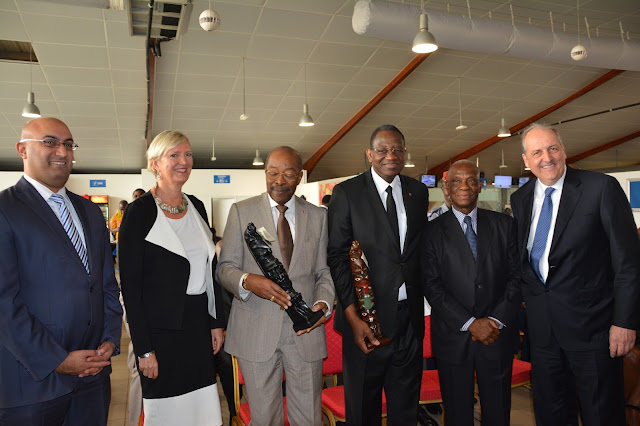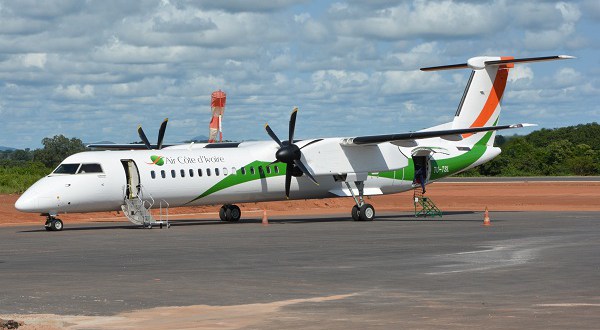Air Cote d’Ivoire Eyes Growth In Passenger Traffic With New Q400.

(R - L) Mr. Alain Dugas, Chief Operating Officer, Bombardier; General Abdoulaye Coulibaly, Board Chairman, Air Cote d'Ivoire; Hon. Gaoussou Toure, Minister of Transport; Hon. Roger Kacou, Minister of Tourism; Mrs. Patricia Mc Cullagh, Canadian Ambassador to Cote d'Ivoire; and Mr. Sameer Adam, Director, Sales, Africa & Middle East, Bombardier. In a bid to further grow its passenger numbers out of its hub in Abidjan, Air Cote d’Ivoire has celebrated the arrival of its third DASH 8-Q400 NextGen aircraft. The new equipment joins the airline’s fleet of brand new aircraft bringing the number currently to seven comprising of three A319s, one A320 and three Q400s. Mr. Rene Decurey, MD, Air Cote d'Ivoire The Minister of Transport, Cote d’Ivoire, Mr. Gaoussou Toure praised the airline for its performance and remarkable achievement within its short time of existence. “This is the year of emergence for Air Cote d’Ivoire and to do this we need more aircraft to fly to mor


